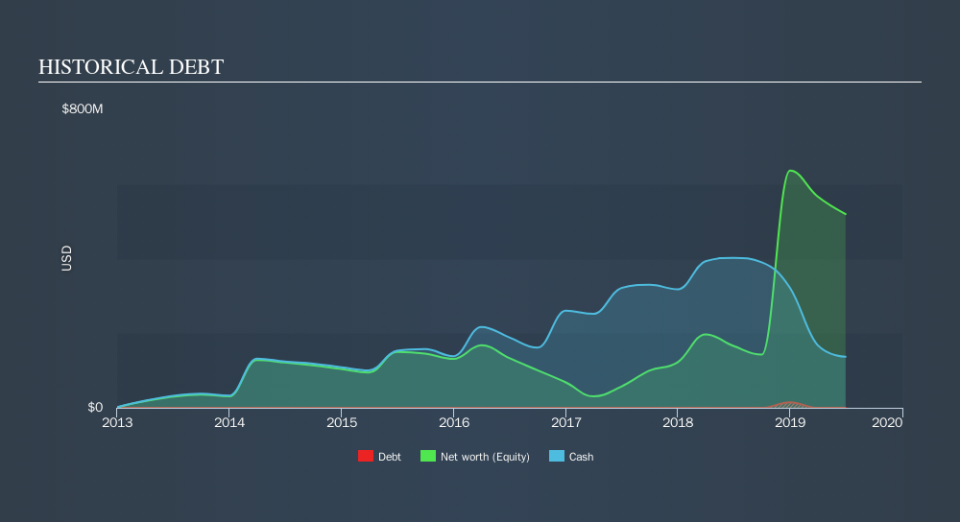Can Akebia Therapeutics (NASDAQ:AKBA) Afford To Invest In Growth?

Just because a business does not make any money, does not mean that the stock will go down. For example, although software-as-a-service business Salesforce.com lost money for years while it grew recurring revenue, if you held shares since 2005, you'd have done very well indeed. Having said that, unprofitable companies are risky because they could potentially burn through all their cash and become distressed.
So, the natural question for Akebia Therapeutics (NASDAQ:AKBA) shareholders is whether they should be concerned by its rate of cash burn. In this report, we will consider the company's annual negative free cash flow, henceforth referring to it as the 'cash burn'. The first step is to compare its cash burn with its cash reserves, to give us its 'cash runway'.
See our latest analysis for Akebia Therapeutics
When Might Akebia Therapeutics Run Out Of Money?
You can calculate a company's cash runway by dividing the amount of cash it has by the rate at which it is spending that cash. In June 2019, Akebia Therapeutics had US$137m in cash, and was debt-free. In the last year, its cash burn was US$267m. So it had a cash runway of approximately 6 months from June 2019. That's quite a short cash runway, indicating the company must either reduce its annual cash burn or replenish its cash. However, if we extrapolate the company's recent cash burn trend, then it would have a longer cash run way. Depicted below, you can see how its cash holdings have changed over time.
How Well Is Akebia Therapeutics Growing?
One thing for shareholders to keep front in mind is that Akebia Therapeutics increased its cash burn by 219% in the last twelve months. On the bright side, at least operating revenue was up 26% over the same period, giving some cause for hope. Considering both these metrics, we're a little concerned about how the company is developing. While the past is always worth studying, it is the future that matters most of all. So you might want to take a peek at how much the company is expected to grow in the next few years.
How Easily Can Akebia Therapeutics Raise Cash?
Given the trajectory of Akebia Therapeutics's cash burn, many investors will already be thinking about how it might raise more cash in the future. Companies can raise capital through either debt or equity. Commonly, a business will sell new shares in itself to raise cash to drive growth. We can compare a company's cash burn to its market capitalisation to get a sense for how many new shares a company would have to issue to fund one year's operations.
Since it has a market capitalisation of US$443m, Akebia Therapeutics's US$267m in cash burn equates to about 60% of its market value. Given how large that cash burn is, relative to the market value of the entire company, we'd consider it to be a high risk stock, with the real possibility of extreme dilution.
So, Should We Worry About Akebia Therapeutics's Cash Burn?
As you can probably tell by now, we're rather concerned about Akebia Therapeutics's cash burn. In particular, we think its increasing cash burn suggests it isn't in a good position to keep funding growth. But the silver lining was its revenue growth, which was encouraging. After considering the data discussed in this article, we don't have a lot of confidence that its cash burn rate is prudent, as it seems like it might need more cash soon. We think it's very important to consider the cash burn for loss making companies, but other considerations such as the amount the CEO is paid can also enhance your understanding of the business. You can click here to see what Akebia Therapeutics's CEO gets paid each year.
Of course, you might find a fantastic investment by looking elsewhere. So take a peek at this free list of companies insiders are buying, and this list of stocks growth stocks (according to analyst forecasts)
We aim to bring you long-term focused research analysis driven by fundamental data. Note that our analysis may not factor in the latest price-sensitive company announcements or qualitative material.
If you spot an error that warrants correction, please contact the editor at editorial-team@simplywallst.com. This article by Simply Wall St is general in nature. It does not constitute a recommendation to buy or sell any stock, and does not take account of your objectives, or your financial situation. Simply Wall St has no position in the stocks mentioned. Thank you for reading.

 Yahoo Finance
Yahoo Finance 
